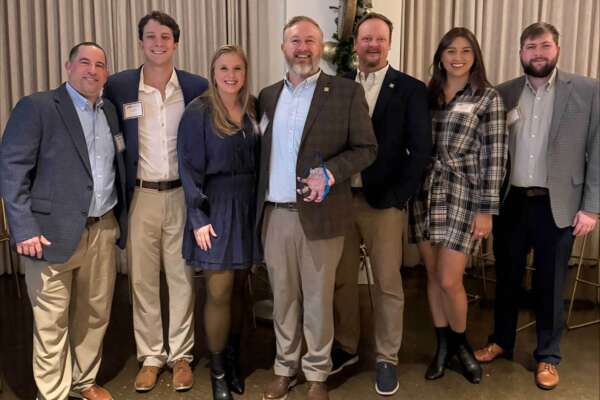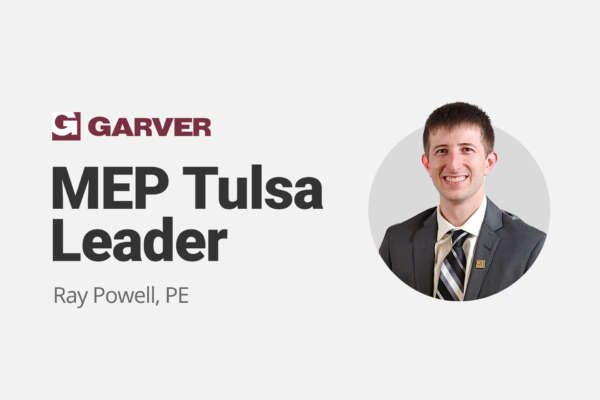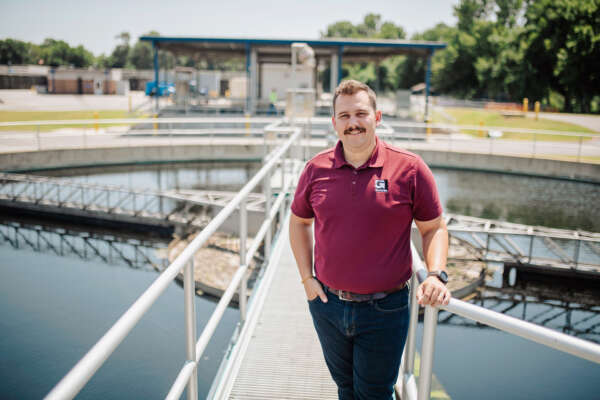Arkansas Water 2023
Hot Springs, Ark. | Apr. 30 - May. 03
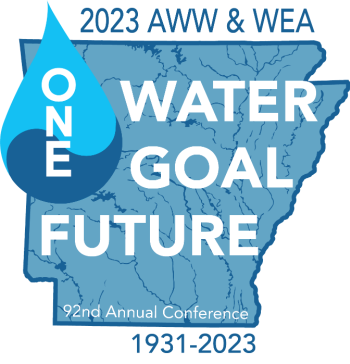
Since 1931, the common goal of the members of the Arkansas Water Works and Water Environment Association has been to provide clean water. The organization hosts an annual conference for those actively engaged in the design, management, operation and control of water works systems, with the 92nd conference being held April 30 - May 3 in Hot Springs. Garver is excited for the valuable opportunities to meet, present, learn, and network with other water professionals from throughout the state.
Technical Presentations
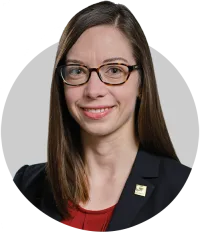
8:45 AM CT
Pellet Softening for Ground and Surface Water Treatment
Disposal of softening residuals for hard water, whether brine or sludge, can be burdensome for water systems. Pellet softening relies on the same chemistry as conventional softening, but occurs within upflow fluidized bed reactors (UFBRs) as calcium carbonate precipitates onto seed particles to form pellets, accelerating the softening process. This presentation will describe the fundamentals of pellet softening and how the technology can be incorporated into groundwater and surface water treatment processes.
PRESENTER: Distribution System Water Quality Practice Leader Ashley Pifer, Ph.D., PE

9:45 AM CT
How a $200 Air Release Valve Postponed a $2,500,000 Booster Pump Station Project By Years
When Garver reviewed existing as-builts for pipelines and pump stations at Widefield Water and Sanitation District’s Integrated Water and Wastewater Hydraulic Masterplan just south of Colorado Springs, Colorado, they found 18 locations in the distribution systems that did not have air release valves at intermediate highpoints in the pipeline profiles. The recommendation came for the operations staff to install a $200 combination air valve, allowing a consistent increase in air flow to avoid potential air-locked locations and lowering the energy intensity. This resulted in WWSD not having to install a $2.5 million Booster Pump Station upgrade as originally anticipated. This presentation will cover basics in air management theory in pressurized pipes and the energy impact of alleviating the air, as well as how the air mitigation project was deployed.
PRESENTER: Hydraulics Practice Leader Evan Tromble, Ph.D., PE

10:45 AM CT
GAC Adsorption Process Design Considerations
The granular activated carbon (GAC) adsorption process is considered to be one of the most versatile technologies with applications in water treatment as well as for water reuse. As various regulatory authorities around the country are engaged in the development of regulations for indirect potable reuse (IPR) and direct potable reuse (DPR), GAC adsorption is identified as one of the major technologies needed for producing potable water. This presentation will provide basic information about treatment processes which include GAC as an essential component, as well as a detailed discussion of how to choose the right type of GAC and how to determine design criteria for specific treatment objectives.
PRESENTER: Water Practice Leader Zaid Chowdhury, Ph.D., PE, BCEE

10:45 AM CT
Installing Continuous Monitoring Sensors to Improve Water Loss Control, Operations, and Asset Management
The increasing availability of continuous monitoring sensors for flow, pressure, and acoustic leak detection for water distribution systems presents new opportunities for addressing water loss and its impact on system performance. Depending on leak reporting and traditional acoustic leak surveys can delay repairs and leave some leaks undetected altogether. This presentation will focus on the water loss control program for Rogers Water Utilities, which has installed nearly 500 continuous acoustic monitors at strategic locations that have identified several unreported leaks, along with a summary of the identified leaks and impacts observed following the repairs.
PRESENTER: Planning Phase Manager Josef Dalaeli, PE
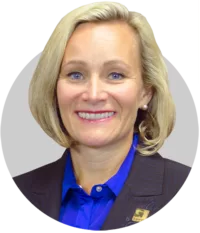
10:45 AM CT
One Size Fits All? Model-Based Approach to Assess and Improve Team Collaboration
As the Program and Management Support Leader on Garver’s Water team, Jennifer Russell has honed her West Point leadership motto of being a “Leader of Character.” Her extensive experience in managing people, processes, and tools includes needs analysis, project definition, design, contract, and construction supervision, has shaped her career around implementing systematic approaches to cross-discipline coordination to make projects seamless and successful. In this presentation, Russell will help bring an understanding and identification of what technology works best for each client’s needs, as well as assisting in establishing a process to move projects forward while breaking it down into pieces that are easily manageable and capable of meeting milestone goals.
PRESENTER: Program and Management Support Leader Jennifer Russell, EISE, CSEP

1:30 PM CT
Leveraging Energy Management Principles to Enhance Asset Managment Programs ... With a Touch of Pump System Optimization Solutions (SOS)
For years, traditional asset management has utilized ASHRAE Level 1 audits where a visual assessment of a critical process components, such as pumps, blowers, filters, clarifiers, tanks, and pipes, were performed. Comprising a risk register, it is used to systematically evaluate risks, define their priority and potential impact, and document mitigation strategies with their respective costs. However, for electro-mechanical equipment, these traditional approaches didn’t tell the whole story. This presentation will reveal how energy-intensity mapping and wire-to-water efficiency testing can significantly enhance the likelihood of failure (LOF) accuracy and provides a better way to evaluate the “true” remaining useful life of critical electro-mechanical equipment and related processes.
PRESENTER: Practice Area Director Randy McIntyre, PE, BCEE
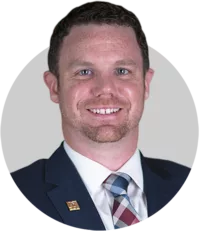
1:30 PM CT
Doubling Capacity of a BNR Facility With Most Stringent Phosphorous Limit
PRESENTER: Process/Process Mechanical Manager Rusty Tate, PE

2:30 PM CT
Risk and Resiliency: Using Water Modeling to Plan For the Worst
Developing a water master plan for a water utility is vital to maintaining quality service to customers as the community grows. Adding an emphasis on risk and resiliency of the water distribution system is paramount to a water service provider’s ability to respond to critical failures within the system, and performing a critical analysis through hydraulic modeling can help identify areas of concern while determining potential approaches to mitigate the risk these vulnerabilities present within that system. This presentation will provide a background on including a risk and resiliency assessment in a water master plan and how Garver has implemented this in multiple master plans across Arkansas and surrounding states.
PRESENTER: Project Engineer Ryan Pottinger, PE

3:30 PM CT
Tailored Tools: How to Pick Project Management Information Systems That Work For You
Utilities use project management tools to support collaboration and project success. While the market has a wide array of options that do things well, no singular tool does everything required, with utilities using other software tools that perform similar functions. A little investigation and consideration of the utility’s needs, beginning by defining and prioritizing requirements, could mitigate frustration and help identify a better solution for your utility. This presentation will be valuable for utilities of all sizes who are considering implementing new software, including steps that should be taken to identify the correct plan and software for your specific needs.
PRESENTER: Program and Management Support Leader Jennifer Russell, EISE, CSEP
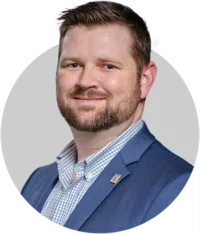
3:30 PM CT
Panel Discussion: How to Build Relationships and Engage the Industry At All Levels
Join Garver Arkansas Water Leader Team Leader Jerry Martin and other panelists to discuss how to engage and build your network in the industry, both from the inside and out.
PRESENTER: Arkansas Water Team Leader Jerry Martin, PE

8:45 AM CT
The Benefits of a Resilient WTP For Complying With DBP and PFAS Regulations
Water utilities across the country are facing a number of new rules, guidelines and standards, including compliance requirements for controlling PFAS in drinking water by the end of 2023 while the revision process for the Microbial and Disinfection by Product (MDBP) Rule cluster will also be taking shape. The combined effects of these rules will require water systems to look towards additional protective treatment technologies, such as granular activated carbon (GAC) adsorption, ion exchange (IX), and reverse osmosis (RO). This presentation will assess the ability of various types of water treatment systems to comply with current regulations, as well as complying with these future regulatory changes.
PRESENTER: Water Practice Leader Zaid Chowdhury, Ph.D., PE, BCEE

8:45 AM CT
Headworks: The First Line of Defense - Five Critical Success Factors
Headworks factories are typically comprised of screening and grit removal equipment, and as our Water Reclamation Facilities (WRF) evolve, the role of our headworks facilities has become even more crucial. While there is currently a trend of upgrading existing headworks with new technologies designed to increase performance and overall efficiency, we must understand that simple retrofits may not be so simple. This presentation will cover the critical design considerations and success factors for a reliable headworks facility.
PRESENTER: Process/Process Mechanical Manager Rusty Tate, PE

9:45 AM CT
Pump Fundamentals
This presentation will consist of development of basic system curves, overview of pump curves, illustration of various combined pump and system curves, as well as reviewing pump principles. Additionally, it will include a demonstration of the development of basic system curves, an overview of pump performance curves, and an illustration of various pump and system curves to convey how pumps will interact with the system over a range of operating conditions.
PRESENTER: Senior Project Manager Paul Strickland, PE

10:45 AM CT
PFAS Everywhere: How the Regulations Are Evolving For Water and the Environment
Based on national surveys, more than 95 percent of the U.S. population has detectable concentrations of various per- and polyfluoroalkyl (PFAS) substances in their blood stream. Because these chemicals have a very long half-life in humans, and also because several of these compounds are implicated at very low levels to cause disruption in human health, the Environmental Protection Agency (EPA) has taken unprecedented actions to limit these compounds in our drinking water and in the environment. This presentation will provide a summary of regulatory actions, as well as occurrence and technology information available to date.
PRESENTER: Water Practice Leader Zaid Chowdhury, Ph.D., PE, BCEE

10:45 AM CT
Mind the Gap: How to Move Your Mountain of Data
As the Program and Management Support Leader on Garver’s Water team, Jennifer Russell has honed her West Point leadership motto of being a “Leader of Character.” Her extensive experience in managing people, processes, and tools includes needs analysis, project definition, design, contract, and construction supervision, has shaped her career around implementing systematic approaches to cross-discipline coordination to make projects seamless and successful. In this presentation, Russell will help bring an understanding and identification of what technology works best for each client’s needs, as well as assisting in establishing a process to move projects forward while breaking it down into pieces that are easily manageable and capable of meeting milestone goals.
PRESENTER: Program and Management Support Leader Jennifer Russell, EISE, CSEP

10:45 AM CT
Evaluating Biological Nutrient Removal (BNR) Alternatives Utilizing Process Modeling Software
Industrial water reuse at a wastewater treatment plant served as a point of emphasis for upcoming regulatory changes. The plant historically used treated effluent being conveyed to an industrial user for cooling water, then subsequently discharged as spray irrigation on farmland. An evaluation was done to determine the feasibility of implementing full-scale biological nutrient removal (BNR) at the municipal WWTP as compared to a new treatment facility. This presentation will give a general overview on the need for BNR at this WWTP, including a discussion of the influent characterization and its importance in evaluating nutrient removal alternatives.
PRESENTER: Process/Process Mechanical Manager Rusty Tate, PE

10:45 AM CT
Laying the Foundation For Digital Twins at Your Utility
Innovation in the water and wastewater industries provides potential for utilities to better understand, operate, and manage their systems at all levels, specifically utilizing digital twins that integrate system information with predictive modeling capabilities to allow proactive utilities to optimize water supply and asset management. Digital twins bring together system data streams to provide insights into elements of the utility that are not captured with traditional models or smart networks alone. This presentation will focus on developing digital twins, with an overview of foundational data that will enable applications across the water and wastewater sector.
PRESENTER: Hydraulics Practice Leader Evan Tromble. Ph.D., PE

2:30 PM CT
Leveraging Your Data For Lead and Copper Rule Compliance
PRESENTER: Geospatial Solutions Leader Drew Moffitt, GISP



